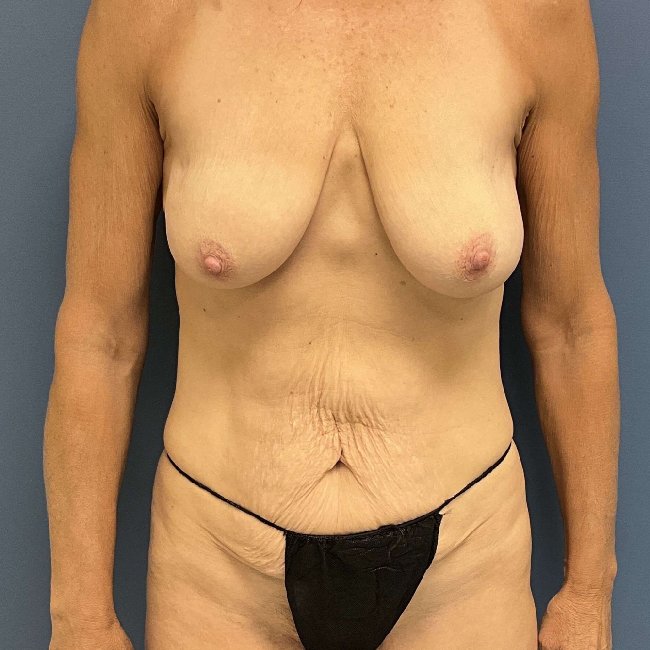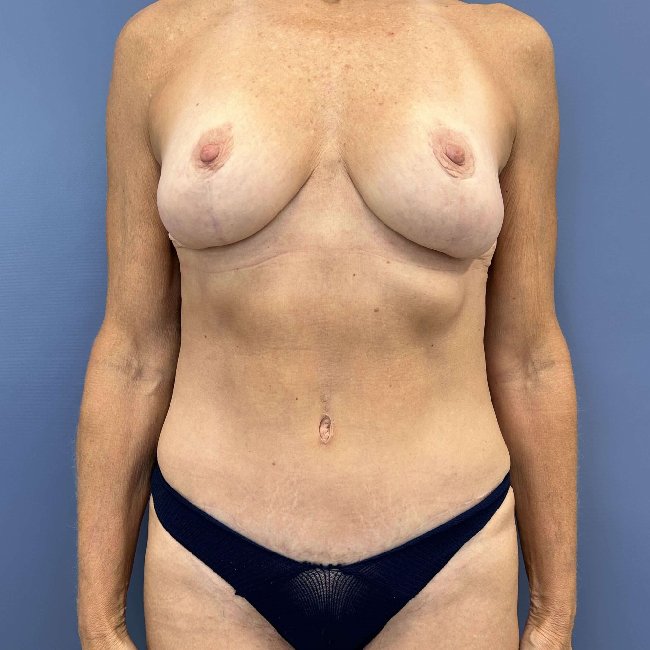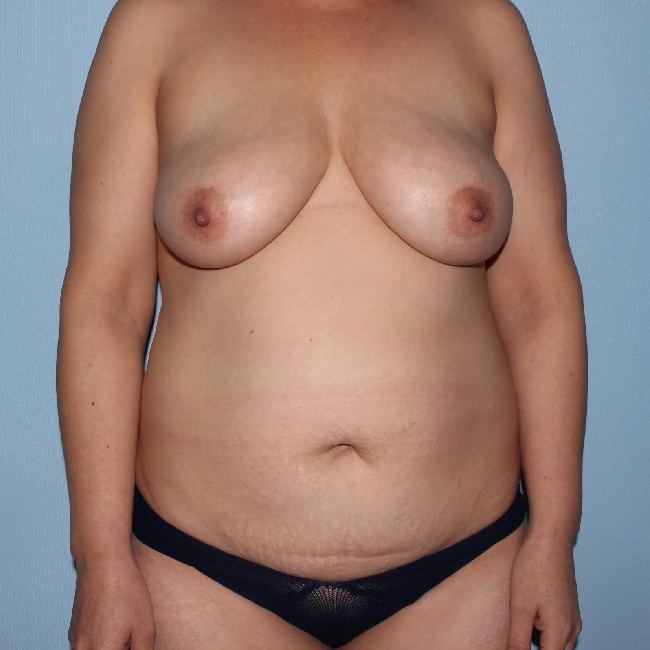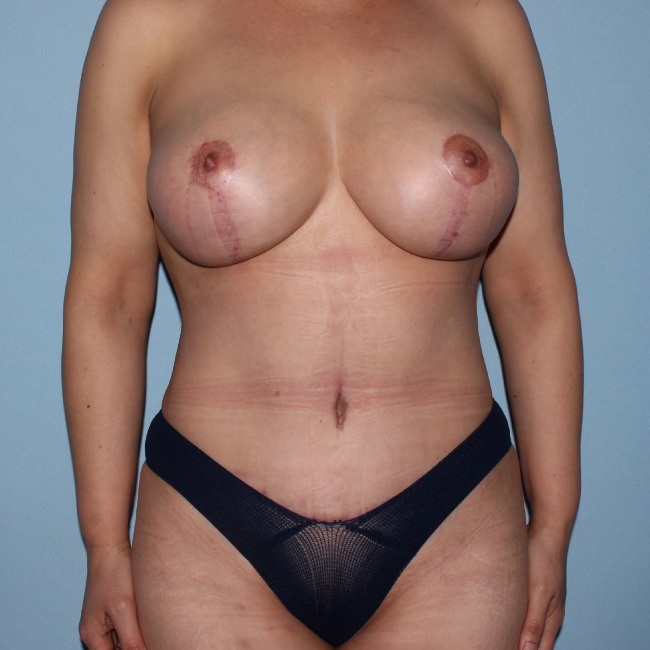
A mommy makeover can be a powerful, transformative experience for women looking to restore their bodies and regain confidence after pregnancy and childbirth. But one of the most important aspects of this journey is often overlooked: recovery.
Understanding what recovery looks like, how long it takes, and what to expect at every step helps patients feel informed, prepared, and empowered. Dr. Glenn Lyle, a board-certified plastic surgeon in Raleigh, NC, has helped hundreds of women through the mommy makeover journey with exceptional results and a compassionate, personalized approach to recovery.
This guide offers a week-by-week timeline, proven strategies, and Dr. Lyle’s expert tips to support a safe, comfortable, and successful healing process.
What Is a Mommy Makeover?
A mommy makeover is a customized combination of procedures designed to address the physical changes that occur after pregnancy. It often includes breast surgery such as augmentation, lift, or reduction, a tummy tuck to repair separated abdominal muscles and remove excess skin, and liposuction to contour the waist and other areas. Every woman is different, and Dr. Glenn Lyle tailors each surgical plan to meet her individual goals, body type, and lifestyle.
Recovery varies depending on which procedures are performed, your overall health, and how closely you follow post-operative care instructions. While it is a significant surgery, many women are surprised by how manageable the healing process can be with proper support and planning.
Week-by-Week Recovery Timeline
– Week 1: Rest and Rebuilding
The first week after surgery is the most physically demanding. Most patients experience swelling, bruising, tightness, and soreness, especially around the abdomen and breasts. During this time, your body is focusing entirely on healing, and rest is critical. Dr. Glenn Lyle and his team provide pain management protocols and detailed instructions to support a smooth recovery.
Depending on your surgical plan, drains may be placed during surgery to help remove excess fluid. These are typically monitored and removed at an appropriate time during follow-up visits. Patients are also fitted with medical-grade compression garments immediately after surgery to support the treated areas, reduce swelling, and promote proper healing.
Key actions during Week 1 include:
- Resting in a reclined position to reduce tension on incisions
- Walking gently for at least 10-15 minutes every few hours to support circulation
- Wearing compression garments as directed
- Avoiding bending, lifting, or twisting
- Keeping hydrated and eating nutrient-rich meals
– Week 2: Turning the Corner
By the second week, most patients start to feel a noticeable improvement in mobility and overall energy. Bruising starts to fade, and pain becomes more manageable, often requiring fewer or no narcotic pain medications or Tylenol or ibuprofen. This stage is often described as the turning point, where patients feel more optimistic about their recovery and begin to see early changes in their body contours.
Short walks around the house or even outdoors and light daily activities are usually safe, but it’s still important to avoid any lifting or strenuous motion. If drains were placed, they may be removed during this time depending on output and healing. This is also the week when you’ll typically have your first follow-up visit with Dr. Glenn Lyle, who will evaluate your progress, change or assess the SteriStrips applied to your surgical incisions, and provide guidance for the next phase of healing.
Although some patients feel well enough to consider returning to work, only those with sedentary roles and full medical clearance should do so. You should not be driving if you are still taking narcotic pain medication. Generally, plan 2 weeks of no driving. You must feel comfortable enough to slam on the brakes without hesitation if a situation demands.
– Weeks 3 to 4: Transition and Reintroduction
The third and fourth weeks mark a shift toward more independence and comfort. Swelling continues to decline, and mobility improves significantly. Patients generally feel more confident moving around, handling light chores, and even returning to office work or social activities, depending on their energy levels and surgeon’s approval. For those seeking to return to exercise- light dumbbells ( 5-10 pounds) are a great minimally disruptive way to remain active without putting excessive strain on the surgical sites. Dr. Lyle will tell you if this is OK.
At this stage, Dr. Glenn Lyle transitions patients from SteriStrips to medical-grade silicone tape to promote scar healing. Silicone tapes are worn for up to three months and help flatten and soften surgical scars. Some patients may begin their first DermaV vascular laser treatment, which targets early redness in healing incisions. Red light therapy may also be introduced to stimulate collagen and improve skin regeneration. In certain cases, Neogen plasma energy is used to further support tissue repair and refinement.
Key care updates during this phase:
- Silicone tapes replace SteriStrips on healing incisions
- First DermaV or red light treatment may be introduced
- Compression garments remain important, especially for arms, breasts, trunk, and thighs
- Scar massage is still avoided
Driving and desk work may resume with clearance
Month 2: Renewed Energy and Early Confidence
By the second month, most women feel far more energized and independent. Many have returned to work, are able to care for their children, and are starting to feel emotionally connected to their results. The most dramatic swelling has subsided, and the new body contours are taking shape.
Patients who are healing well may be cleared to begin low-impact cardiovascular exercise, such as walking on a treadmill or using an elliptical, depending on the extent of their surgery. Dr. Glenn Lyle carefully evaluates each patient’s recovery before allowing the resumption of physical activity.
Scar therapy continues to be important during this period:
- Continue wearing silicone tapes daily unless otherwise instructed
- Use silicone cream as a substitute for sensitive areas
- Follow-up treatments with DermaV or Neogen as advised
Compression garments are still worn regularly and continue to aid in scar quality and body contour support. Emotional well-being also improves as patients gain confidence and begin enjoying the changes they see in the mirror.
Months 3 to 6: Strength and Refinement
Between three to six months post-surgery, most patients feel almost fully recovered. Strength returns, and physical limitations are lifted. At this stage, swelling has largely resolved, scars are maturing, and final results are becoming visible.
Dr. Glenn Lyle typically approves scar massage after the three-month mark. When done correctly and at the appropriate time, massage can help soften and smooth scar tissue. Patients who continue with laser or energy-based scar therapies often see further improvement in the appearance of their scars.
Physical activity is gradually increased. Many patients reintroduce strength training and more vigorous exercises with clearance. By this point, the body has regained much of its strength and endurance, but it is still important to listen to your body and not overdo it too quickly.
Patients are reminded to:
- Avoid direct sun exposure on healing scars
- Use high-SPF sunscreen or protective clothing outdoors
- Continue scar treatments until instructed otherwise
The Most Common Recovery Mistakes
Despite the best intentions, some patients unintentionally delay their healing or compromise their results by making common recovery mistakes. Dr. Glenn Lyle emphasizes education and clear communication to prevent these setbacks.
Recovery pitfalls include:
- Returning to intense exercise or lifting too soon
- Skipping compression garments
- Starting scar massage prematurely
- Not attending follow-up visits
- Comparing your progress to others
Each body heals differently. Patience, consistency, and open communication with your surgical team will make the biggest difference in long-term success.

Meet Dr. Glenn Lyle
Board Certified Plastic Surgeon
Dr. Glenn Lyle, a board-certified plastic surgeon, has been proudly serving the Raleigh, NC, community at Lyle Plastic Surgery and Aesthetics Center since 2002. With a deep passion for helping patients reclaim their confidence, Dr. Lyle specializes in transformative breast surgery and body contouring procedures. Whether addressing the effects of weight loss, pregnancy, or aging, his expert care and artistic approach empower individuals to look and feel their best. Dr. Lyle is dedicated to creating beautiful, natural results that reflect each patient’s personal journey and goals.
Why Dr. Glenn Lyle’s Recovery Process Is Different
Dr. Glenn Lyle’s commitment to recovery excellence is one of the key reasons patients across Raleigh, NC and beyond trust him with their surgical care. His recovery protocols go well beyond the basics and are designed to support not just physical healing, but also long-term satisfaction.
Each patient is carefully guided through wound care and scar therapy, with a structured plan that includes:
- Use of SteriStrips in the first few weeks
- Transition to silicone tapes for up to 3 months
- Advanced treatments like DermaV laser, red light therapy, and Neogen plasma
- Personalized garment fitting for optimal support
- Ongoing adjustments based on patient response and skin type
Perhaps most importantly, Dr. Lyle and his team make themselves available throughout the process to answer questions, provide reassurance, and help patients feel supported. Recovery doesn’t end in the operating room, and the ongoing care you receive plays a critical role in your final outcome.
The Emotional Side of Recovery
Physical healing is just one part of the recovery journey. Many women also go through emotional ups and downs as they adjust to their new appearance. The early days can feel overwhelming, but with each passing week, there is a growing sense of empowerment and self-confidence.
Dr. Glenn Lyle understands that surgery impacts more than the body. That’s why his patient care in Raleigh is designed to be both physically and emotionally supportive. His patients consistently report feeling heard, cared for, and reassured at every stage of the journey.
Frequently Asked Questions About Mommy Makeover Recovery
How long before I can pick up my child after surgery?
Most patients should avoid lifting anything over 10 pounds for at least 4 to 6 weeks. Dr. Glenn Lyle will assess your healing before clearing you for lifting young children safely.
Will I need someone to help me during recovery?
Yes, especially during the first week. Having a trusted adult assist with daily tasks, childcare, and mobility will make your recovery safer and more comfortable.
Can I sleep on my side or stomach after a mommy makeover?
You should sleep on your back in a reclined position for the first few weeks. This helps reduce tension on your incisions and promotes better healing.
Are scars permanent, and how noticeable will they be?
All surgical scars are permanent, but Dr. Lyle uses precise closure techniques and advanced scar therapy to minimize their appearance. With proper care, scars typically fade significantly over time.
When can I start wearing regular clothes again?
Compression garments are usually worn for a minimum of 6 weeks. Stepdown garments allow transitioning to less bulky fitwear that can be more comfortably worn and hidden under clothing.. You can gradually return to wearing regular clothing as swelling decreases and garments are no longer required.
How long until I see my final results?
While you may see early improvements within a few weeks, your final results will become visible between 3 to 6 months. Swelling takes time to fully resolve and contours will continue to refine.
What if I have a special event coming up?
It’s best to plan at least 3 months ahead for important occasions. Dr. Glenn Lyle can help you schedule your surgery so you feel confident and comfortable in time for your event.
Further Reading
- Read about Mastopexy and Abdominoplasty for the Perfect Mommy Makeover Blog
- Read about Tummy Tuck with Prior Ugly Abdominal Scars – a Difficult Case Blog
Conclusion: Recovery Is a Journey
Healing from a mommy makeover takes time, but each week brings new strength, confidence, and transformation. From surgical precision to advanced scar therapy, Dr. Glenn Lyle offers women in Raleigh, NC the guidance they need to recover fully and beautifully.
If you are ready to explore a mommy makeover and want the support of a trusted board-certified plastic surgeon, schedule a personalized consultation with Dr. Glenn Lyle today. Call 919-307-8585.
Visit related pages or take the next step toward restoring your body and confidence.





